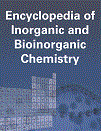Assembly of Dimanganese and Heterometallic Manganese Proteins
Abstract
Manganese is an essential trace element in all domains of life, and manganese-dependent enzymes catalyze a wide range of reactions including hydrolysis, phosphorylation, water oxidation, nucleotide reduction, and protection against oxidative stress. Dinuclear manganese-containing cofactors are both homonuclear and heteronuclear centers. Due to its rich redox chemistry, manganese is found in a number of redox-active enzymes, where the oxidation state of the metal ion ranges from MnII to MnIV. Non-redox-active metal sites are found in, for example, sweet potato purple acid phosphatase (MnIIFeIII), concanavalin A (MnIICaII), arginase (MnII2), and prolidase (MnII2). Proteins with redox-active Mn-containing dinuclear centers generally belong to the ferritin-like superfamily. Whereas most members of the superfamily have an Fe2 center, Mn-containing metal sites are found in Mn catalase (Mn2), some RNR β subunits (subclasses Ib and Id have Mn2, and subclass Ic has MnFe), and R2lox (MnFe). In addition, a member of DNA-binding protein from starved cells (Dps) can form an MnFe center. No manganese chaperones are known and Mn-dependent enzymes plausibly acquire their metals directly from the intracellular pool of Mn2+, which is balanced via different import and efflux transporter systems:
- Mn catalase catalyzes the disproportionation of the reactive species hydrogen peroxide by alternating between MnIII2 and MnII2 in two consecutive reactions, detoxifying two hydrogen peroxide molecules to oxygen and water.
- RNR subclass Ib β subunit has an oxidized metal center and a tyrosyl radical. It initially binds Mn2+ and forms a complex with a specific flavodoxin-like protein that oxidizes the metal center to a transient MnIV/III species, which converts to the active MnIII2-Tyr• cofactor.
- RNR subclass Ic β subunit has an MnIVFeIII cofactor. It is formed by O2 oxidation of a MnIIFeII center, and the initial transient MnIVFeIV center is reduced to the active cofactor via an external electron transfer pathway.
- RNR subclass Id β subunit is suggested to contain an oxidized Mn2 center formed in the absence of a flavodoxin-like maturase and lacks the tyrosyl radical.
- R2-like ligand-binding oxidase (R2lox) has an MnIIIFeIII cofactor that is generated from MnIIFeII by O2 oxidation. It is assumed that an MnIVFeIV intermediate generates a valine–tyrosine cross-link adjacent to the metal site.



